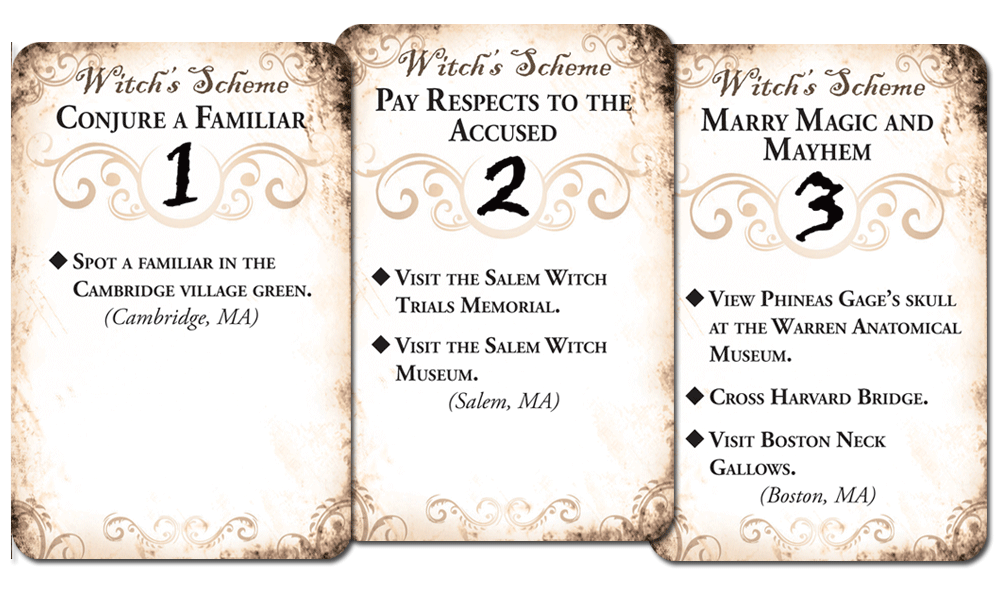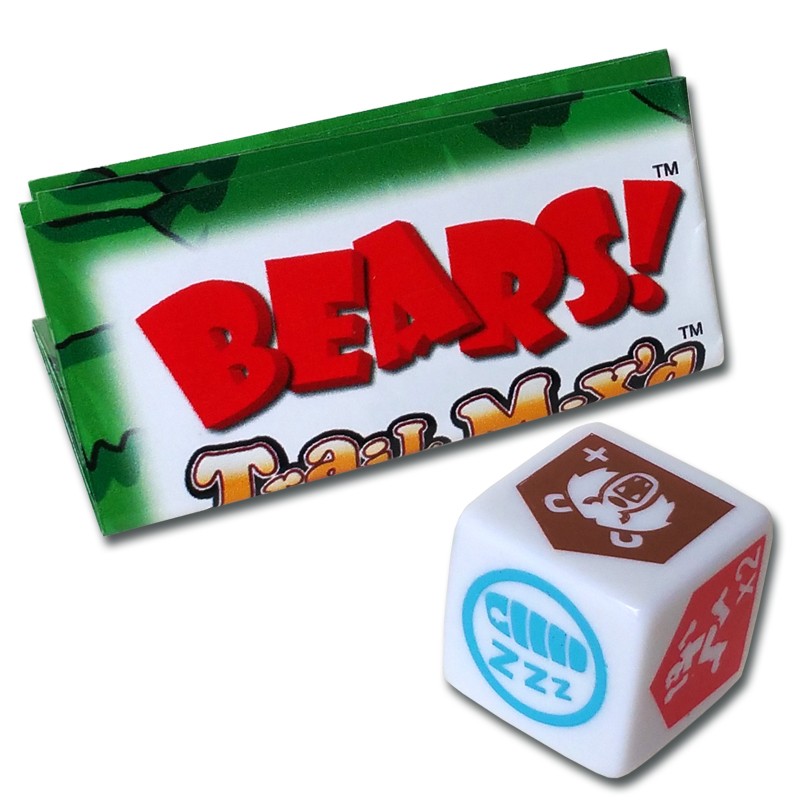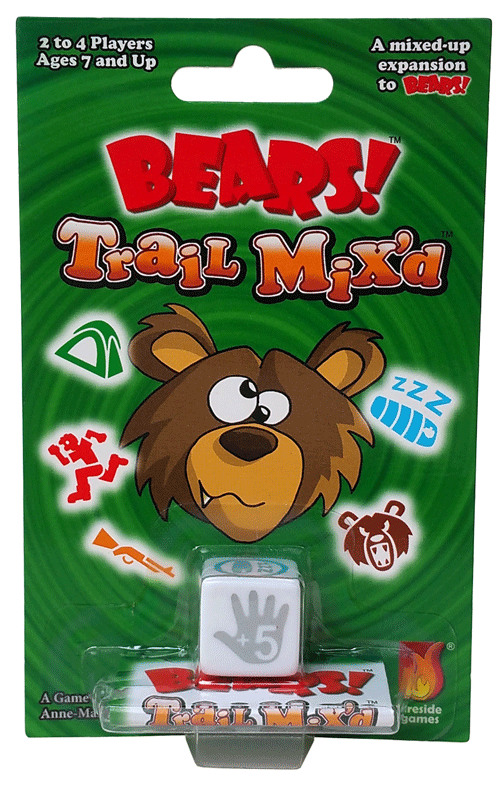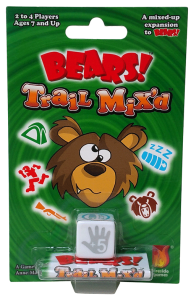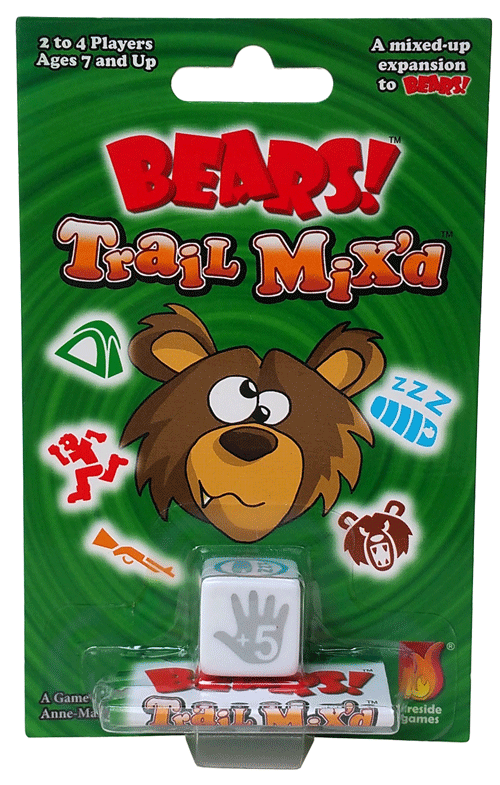In this article, Anne-Marie De Witt, CEO of Fireside Games and designer of a hefty percentage of our products, shares some insights on the product development cycle and compares the design processes for Bears! Trail Mix’d (releasing June 24) and The Village Crone (due out this fall).
How long does a game take to design from initial idea to publication?
Quick Answer: It varies widely.
Real, In-Depth Answer: When planning a game, we try to keep to a one-year development cycle. The longer a game takes, the higher the expenses and the higher the sales need to be. However, a game that hits all of the right deadlines and turns out to be no fun won’t sell or cover its costs either. The best course is to pursue the game design diligently, know when it’s working, and be willing to kill it when it’s not. A game isn’t worth publishing if it isn’t strong. There are too many great games on the market to invest money in a mediocre idea.
 The shortest development cycle we have had was 8 months, which was for Bears! The concept came rapidly and was refined almost to its end state as I wrote it out for the first time. The whole game design process took just 2 weeks. Art development, graphic design, and layout took about 4 weeks. The remainder of the time was spent in manufacturing, shipping, warehousing, and fulfillment.
The shortest development cycle we have had was 8 months, which was for Bears! The concept came rapidly and was refined almost to its end state as I wrote it out for the first time. The whole game design process took just 2 weeks. Art development, graphic design, and layout took about 4 weeks. The remainder of the time was spent in manufacturing, shipping, warehousing, and fulfillment.
It actually took longer (10 months) to develop Trail Mix’d, the expansion to Bears!, because the game design was harder to nail down. If I had trusted my instincts, it would have taken a shorter amount of time, but I spent some time chasing down other solutions that didn’t pan out. In the end, though, the assurance I have in my final design was probably worth the time spent even though I could have gotten it to market more quickly.
 Knowing what constitutes your initial idea can be tricky as well. After working on different approaches to a witch game for a couple of years, I couldn’t get it feeling right. I hadn’t worked on it for several months when the inspiration for The Village Crone hit me while training a volunteer for GenCon 2014. I excused myself and asked Justin to take over so that I could write it down before I forgot it. The game design evolved tremendously from that flash of insight and required the sacrifice of almost all of the guiding mechanics.
Knowing what constitutes your initial idea can be tricky as well. After working on different approaches to a witch game for a couple of years, I couldn’t get it feeling right. I hadn’t worked on it for several months when the inspiration for The Village Crone hit me while training a volunteer for GenCon 2014. I excused myself and asked Justin to take over so that I could write it down before I forgot it. The game design evolved tremendously from that flash of insight and required the sacrifice of almost all of the guiding mechanics.
Although I look to that day of inspiration as the beginning, you could argue that it started years before and required substantial stewing before it was ready or that its start date was closer to its current incarnation. By the time the manufacturing and fulfillment are complete, getting that game to market will have taken 13 months (ironic for a game in which the winner is the first person to score 13).
Because of the uncertainty in the game design stage and the necessity of it being as solid as possible, most publishers prefer to license games. The designer sinks all of the time in that phase and is compensated based on a percentage, tying his or her return to the strength of the sales. Not only does that help the publisher control costs but it also helps to create a more predictable product development cycle. Of course, unforeseen problems in the publication process (such as strikes by dock workers) can and do occur. But having a plan in place allows you to steer through the obstacles and hit the right time from initial idea to publication to ensure the highest degree of success.
– Anne-Marie De Witt
Do you like articles like this? Want more insider information? Let us know! Email us your “Ask Fireside” submissions and you might be featured in a future blog or newsletter.






